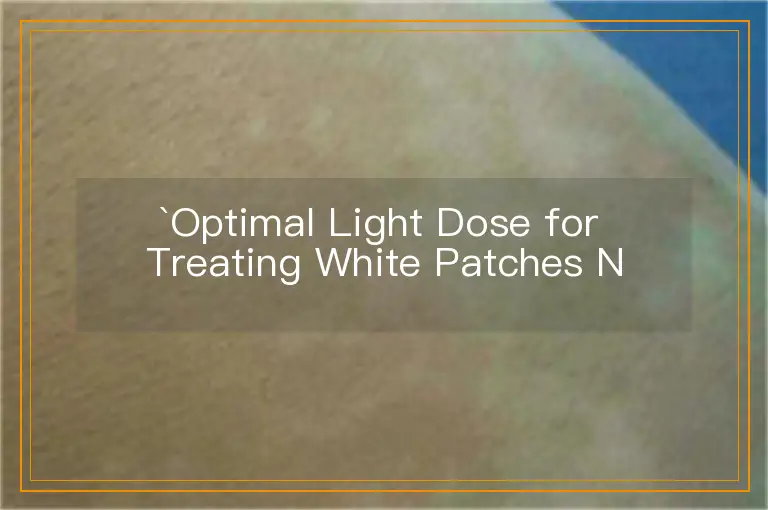`In the treatment of vitiligo, particularly when dealing with white patches next to the nose, determining the appropriate light dose for phototherapy is crucial. This decision must be based on a variety of factors, including the location of the lesion, th。

In the treatment of vitiligo, particularly when dealing with white patches next to the nose, determining the appropriate light dose for phototherapy is crucial. This decision must be based on a variety of factors, including the location of the lesion, the patient's age, the severity of the disease, and their skin sensitivity to light.
The initial dose of phototherapy for vitiligo is often determined based on the Minimal Erythema Dose (MED), which represents the minimum amount of light exposure required to produce a visible redness in the skin. This MED value varies among individuals and can be determined through a photosensitivity test conducted at a hospital. For the nose area, which is relatively sensitive, the initial dose should generally be set conservatively.
The initial dose is just the starting point. The actual dose administered during subsequent sessions should be adjusted based on the skin's response to the previous session. Here are some guidelines:
Different phototherapy techniques and equipment may have specific dosage recommendations. For example, 308-nm excimer laser is a commonly used treatment for localized vitiligo, including patches next to the nose. The initial dose for this type of treatment is typically set at 150-300 mJ/cm², depending on the individual's MED value.
It's important to note that the frequency of phototherapy sessions also plays a role in treatment effectiveness. Generally, sessions should be spaced out to allow the skin to recover, with a recommended frequency of 1-3 times per week.
In conclusion, determining the appropriate light dose for phototherapy of white patches next to the nose in vitiligo involves a careful consideration of multiple factors. By starting with a conservative dose and adjusting based on the skin's response, effective and safe treatment can be achieved.